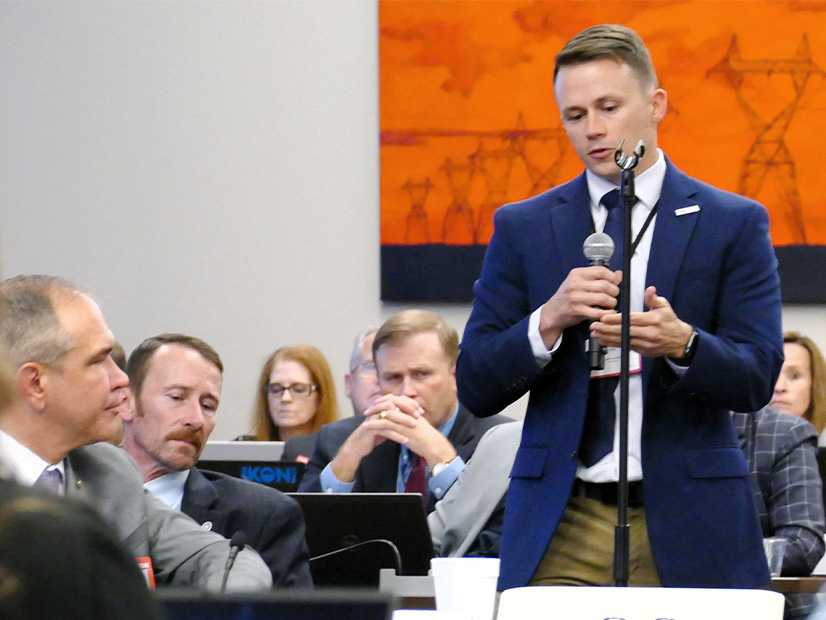
SPP stakeholders have endorsed a pair of winter-weather staging dates for transmission projects after two months of discussions and negotiations that delayed their approval by the Board of Directors.
The Markets and Operations Policy Committee on Dec. 2 voted to endorse the need dates for a pair of projects from the 2024 Integrated Transmission Planning assessment, sending the issue onto the board and its Members Committee for final consideration during their Dec. 9 conference call.
The board delayed a decision on the projects’ need dates — the earliest that staff identify that a project is needed — during its October meeting over a lack of consensus. (See SPP Board Approves $7.65B ITP, Delays Contentious Issue.)
SPP staff met three times over eight days in November with the Transmission and Economic Studies working groups to iron out their differences over the staging issue. They held separate discussions on two winter storm-based models, reviewed staging data on the Year 2 Winter Storm Elliott model and agreed on an incremental staging concept to prevent Elliott-level load shed.
Sunny Raheem, SPP’s director of system planning, said staff’s focus was ensuring stakeholders could review the two models and provide additional education on the staging approach used to determine the projects’ need dates and in-service dates.
“There was a lot of involvement from the stakeholder groups and being able to make sure those meetings were progressing forward and accurately within the board’s direction,” he said.
The discussions resulted in MOPC’s endorsement of a December 2028 date for the 345-kV Tobias-Elm Creek transmission line on the western side of SPP’s footprint, an 85-mile segment valued at $887.46 million. It cleared the two-thirds approval threshold with 71%.
The TWG and ESWG recommended a 2028 need date for the 154-mile, $484.09 million 345-kV Buffalo Gap-Delaware project from Kansas into Southwest Missouri, but Evergy was able to amend the motion to move the need date to December 2025. MOPC eventually approved a motion that included the 2025 need date as resolving the remaining Elliott target area’s reliability needs, consistent with SPP staff’s incremental staging approach. It passed with 75% approval.
The first project is expected to increase transfer capability from SPP North to SPP South and decrease the chances for load shed. The second brings a new extra-high-voltage source into Missouri to support system voltage and transfers from SPP.
Evergy’s Mo Awad pressed for the earlier 2025 need date, saying a related 345-kV project with a 2025 need date would not resolve low-voltage issues experienced during Elliott. He said the 2025 date is consistent with staff’s “shorter lead time” approach referenced in an ITP staging process information paper.
SPP defines projects needed within three years to be “short-term reliability projects.” SPP must explain the reliability issues and post them for a 30-day comment period before the board’s determination. Incumbent transmission owners hold the right of first refusal.
Rebuild projects in a ROFR state and needed after three years are open to competitive bids under FERC Order 1000.
“I don’t see any of these projects being in service before the winter of 2028. That’s just the reality of building big transmission projects,” Kansas Power Pool’s Larry Holloway said. “It appears to me that this is just an argument to avoid the competitive process.”
Awad responded during an extended back-and-forth between the two with several examples of 345-kV projects that Evergy has been able to complete on time and on budget.
“Those are concrete examples that we complete 345-kV projects by the in-service data as accepted by SPP on the [notification to construct],” Awad said. “I would offer that if those projects go competitive, they’re not going to expedite the projects. They’re going to slow them down. If they’re not competitive, they’re going to go to the [designated transmission owner], and they’re going to start engineering and right-of-way acquisition immediately. If those projects go to the competitive process … it will take a year at least to award the project to an individual. That’s a year that could be used for engineering and right-of-way acquisition.”


